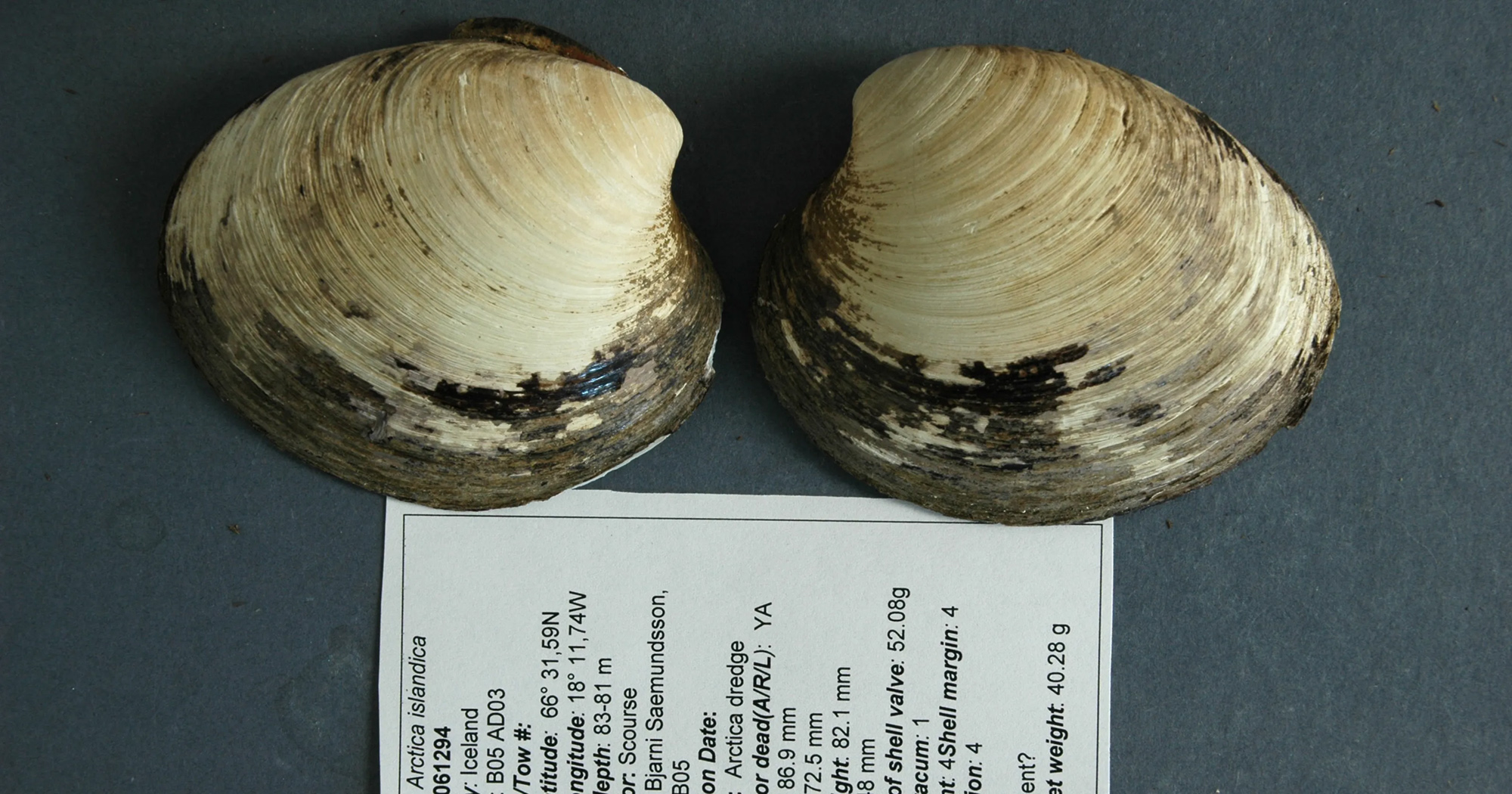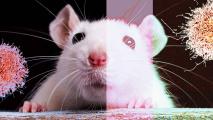Immortality may be out of reach for humans, but the hydra is already enjoying eternal life. Just millimeters long, this jellyfish-like predator is packed full of stem cells and can constantly regenerate, just as the Hydra of Heracles could regrow its heads. Like a living Ship of Theseus, the continual renewal of the hydra’s form essentially means the creature has lost its ability to die naturally — although hydras do die or, perhaps more accurately, can be killed.
Exactly how the “immortal” hydra shirks aging is a mystery, but studying it and other creatures — from long-lived clams to sadly short-lived domestic dogs — can help inform our understanding of aging and help us live longer and better. “The people who want to stay young forever, well, this is not new,” said Steven N. Austad, an expert on aging science and the author of “Methuselah’s Zoo,” a book about the lessons nature can teach about longevity. “People have wanted that for a long time. That’s why we have all these legends about the Fountain of Youth and all.”
“If you can slow down the decline in function, then you’ve slowed down aging.”
Stephen Treaster
Even without an enchanted elixir, humans are already really good at living a long time. We’re the longest-lived terrestrial mammal, outpacing our nearest relatives, chimpanzees and bonobos, by a decent margin. We stay healthy for a long time, too. That’s one reason why extending the amount of time we can experience a high quality of life is so hard. When you already perform exceptionally, every further bit of performance needs to be fought for, found on the margins. “It’s like we’re already a world-class sprinter,” Austad said. Expecting a high school track coach to help us get better isn’t going to work. We need to learn from the best — and some of our friends in the animal kingdom are like Usain Bolt and Flo-Jo combined.
The hydra is the most extreme example, but all six biological kingdoms include organisms that have evolved strategies for longevity. Pando, a quaking aspen clone in Utah, has lived for thousands of years. It’s part of an eternal Eden of trees, seaweeds, and fungi whose lives can last well into the six figures. Greenland sharks, those massive denizens of the frozen depths, are estimated to live between 200 and 400 years. The bowhead whale can clock a couple hundred itself, making it the longest-lived mammal. All of these may be mere babes compared to some under-the-seafloor dwelling microorganisms estimated to be millions of years old.
So, while we’re no closer to a magic wellspring than the conquistadors were, Austad believes we are close to understanding enough about aging to tinker with it — thanks to our friends in the animal kingdom.
Wildlife-span
Aging, for many researchers like Austad, isn’t really about the passage of time. How long an organism is alive — its chronological age — is a useful and easy-to-understand metric. But few would argue that tacking on 10 years would be desirable if that decade were spent with a diminished quality of life.
A major goal of aging research is to increase healthspan, the amount of time we live with what could generally be considered a high quality of life. Rather than the years, days, hours, minutes, and seconds that mark chronological aging, researchers are focused on how long things work well: their biological age. It’s a measure of an organism’s body or body part based on how well it functions. “If you can slow down the decline in function, then you’ve slowed down aging,” said Stephen Treaster, a scientist at the Gloucester Marine Genomics Institute, who is founding a lab to extend his pre- and postdoctoral work.
Chronological age can correlate with biological age, but they don’t move in lockstep — the comparatively compressed lifespan of pets provides a painful example of that. When it comes to studying animals in the wild, however, lifespan can be used as a proxy measurement for healthspan. The reasoning is as graceful as it is brutal: When biological decline hits, wild animals tend to die.
It’s in the outliers where the answers may lie.
The differences between biological and chronological age highlight an uncomfortable truth: Aging doesn’t follow a tidy blueprint. Unlike rocket science or mechanical engineering, biology is messy. The field is, by definition, alive and changing. But there are rough guidelines when you look at life as a whole.
Smaller species of animals generally have shorter lifespans, although, within species, larger individuals don’t last as long. Researchers have found that caloric restriction — reducing daily calorie intake, but not to the point of causing malnutrition — slows aging across vast swaths of life, from yeast to primates. For cold-blooded creatures, living in colder conditions — like the kind you can find underwater — seems to slow decline. Think the Greenland shark, spending its many days a few degrees from freezing.
Carving out a life in a relatively protected environment can lead to a longer lifespan. Treaster gives two classic examples: bats and naked mole rats. Both live much longer than you would expect from their evolutionary history and body size, and bats make their bones by flying, a metabolically costly process. But they’ve both found themselves in very safe spaces. Bats take to the skies and mostly come out at night; naked mole rats spend their lives underground. Once you’ve found your safe spot, Treaster said, “you can start evolving [an] extended lifespan.”
These overarching trends can help us understand biological aging writ large, but they’re not perfect. And it’s in the outliers where the answers may lie. “My approach to this whole problem is tapping into these exceptionally long-lived animals,” Treaster said. “Because they already know how to do it.”
The old clam and the sea
Ming certainly knew how to do it. The ocean quahog, a member of a tasty species of long-lived clam, was dredged up from a depth of around 270 feet off the cold coast of Iceland by the research vessel Bjarni Sæmundsson in 2006. Researchers determined the clam was 507 years old — making it the longest-lived individual animal that we know of.
Ocean quahogs live in a fairly cold and stable environment, but they are small — a perfectly imperfect anomaly for Treaster to study. In 2009, while a doctoral student in Austad’s lab, he began his research on the species, trying to tease out just how they survive so long.
Genomic sequencing was still expensive at the time, and even if he mapped out the ocean quahog’s code, there would have been nothing to compare it to, Treaster said. Despite making up a huge percentage of the tree of life, bivalves like clams, oysters, and scallops are incredibly understudied outside the kitchen — there could be many secrets between those shells.

The key to the ocean quahog’s long life seems to lie in its ability to maintain the integrity of its proteins through the centuries. Proteins are essentially the functional units of organisms, underlying all the processes by which we define life. They’re the most basic point of failure when it comes to biological decline and possibly the most basic level of biological aging. “Cells can fail,” Treaster said, “but they’re failing because their proteins are failing. Because cells are just a bunch of proteins … and some other stuff,” he added, laughing.
That led Treaster to a new hypothesis: Maybe long-lived species are better at maintaining their functional proteins than short-lived ones. Perhaps there was some kind of specific small molecule that helped clams like Ming maintain their proteins. To find out, he ran protein stability tests in long-lived species of clams and compared them to short-lived species of clams. The result: The long-lived clams had more stable proteins.
If scientists could isolate the method by which the ocean quahog maintains its protein integrity, they could translate into a therapeutic more easily. “Especially given that so many human pathologies are, at their heart, a protein-structure failure,” Treaster said.
Clam therapy is not quite here yet, but Treaster and his team are continuing their research on ocean quahogs outside the confines of the lab. Off the coast of New England, Ming’s relatives can live for 200 years, while other clams manage to last for only a few. Unlike in 2009, sequencing the species’ genomes is now an option, and by comparing those results and the clams’ developmental timing, they hope to figure out the secret to the mollusks’ longevity.
Rockfish of ages
Bats and naked mole rats may owe their unusually long lives to their ecological niches. By reducing the pressure to procreate posthaste, the habitats may have allowed evolution to focus on genes that helped the species stick around for a long time, not just a good time.
But nature has given us examples of creatures that have vastly different lifespans, despite being closely related and living in the same environments. This suggests there’s more to a long life than choosing the right home base. To examine this potential link between environment, genetics, and longevity, Treaster turned again to the sea.
Nature’s longevity secrets are scattered across the evolutionary map.
Rockfish are a family of a hundred or so species of bony fish with a large lifespan discrepancy. Some can live for a couple centuries, others for a couple years. Rockfish on both sides of that spectrum can be found in the same underwater environments, suggesting that where they live is not the most crucial factor in lifespan. Evolution-wise, rockfish are pretty recent additions to the ocean, independently evolving longer or shorter lifespans multiple times in only 8 million years. That means the various species are relatively closely related, making for a cleaner comparison of their genes’ role in how long they live.
The prevailing theory on rockfish was that they began as a short-lived creature, with some members of the family later evolving staying power. Treaster discovered the opposite — that rockfish actually began as long-lived creatures, with some species evolving to have shorter lives but the ability to reproduce faster.
With that in mind, he began to look at recent genetic changes in short-lived rockfish species compared to long-lived ones. He found that genes controlling for two different metabolic pathways seem to regulate rockfish lifespan. When he compared one of those pathways to its analog in humans, he found that changes in the genes were tied to longer life in us as well — making them a strong target for healthspan extension therapies.
It’s a surprising result. The two species share genetic pathways that influence their lifespans — even though they diverged 400 million years ago. It’s also more evidence that nature’s longevity secrets are scattered across the evolutionary map.
Location, location, location
Even if rockfish’s lifespans aren’t wholly dependent on their surroundings, the fact that the oceans seem to teem with long-lived species — from clams to whales — suggests that environment does matter. As for what makes the ocean so conducive to a long life, it’s generally colder than on land, and it’s also comparatively safe and stable. Shelter, stability, temperature, and mortality risk are all directly tied to lifespan.
“There are no sudden temperature swings, few predators, and hardly any disturbances,” said Owen R. Jones, associate professor in the Department of Biology at the University of Southern Denmark. “Some good studies support this, for example, showing that maximum recorded longevity increases with depth. And depth is associated with environmental stability.”
“What’s different now is not so much in our biology, but our ability to keep ourselves safe.”
Owen R. Jones
We’ve got terrestrial examples of the importance of safety and stability, too. Galapagos tortoises on predator-free islands can crack a century of life. Cave salamanders — whose cool, stable, subterranean homes echo some ocean conditions — can do the same.
Humans fall into this category, too, albeit in a unique way. In the time we’ve been able to track age accurately, our current maximum lifespan hasn’t really changed much: 115 to 120 years. Contrary to popular perception, a baby born 20,000 years ago with the same genes as you likely had the same biological shot of reaching 80, Jones said. The difference is that modern babies are much more likely to live long enough to get that shot. For much of human history, high infant mortality rates suppressed the average lifespan. “What’s different now is not so much in our biology, but our ability to keep ourselves safe,” Jones said. “Clean water, antibiotics, vaccines, sewage systems, modern housing, controlled food supply, social safety nets.”
It’s the same reason zoo animals often live longer than their wild counterparts.
Most creatures, however, still live at the mercy of their surroundings, which makes them valuable subjects for understanding how the environment impacts biology and biology impacts aging. The problem is that it’s really hard to study animals in the wild. And as Austad pointed out, “A laboratory environment is unbelievably artificial.” In many cases, lab researchers are limited to studying only cells, too, and not whole animals, due to cost and logistics. That may be one of the reasons why attempts to translate lab findings to real-world use cases can be so unsuccessful.
Luckily, there is one animal model for aging that not only shares our environment but also can test one of the few compounds that just might combat aging in humans. And you may be petting one right now.
Paws and effect
The domestic dog has a lot going for it as a model of human aging. It has a comparatively compressed lifespan, which makes longitudinal studies — ones that observe a subject at different timepoints in life — more feasible. Dogs share many of the same aging pathologies humans do, such as obesity, arthritis, and diabetes. We have centuries’ worth of veterinary understanding to draw on when assessing how healthy and happy pups are. And dogs have traditionally been good models for safety and toxicity testing of human treatments. Several medical breakthroughs, including the discovery of insulin, stemmed from canine research.
The Dog Aging Project, an initiative co-founded in 2014 by biogerontologist Matt Kaeberlein, looks to leverage dogs’ advantages as a model of human aging — while helping dogs live healthier and longer. So far, the project has enrolled 50,000 dogs and sequenced the genomes of about 10,000 of them, producing a large amount of data. Kaeberlein, who is also the CEO of healthspan technology company Optispan, said the group tries to collect new data on study participants every year, too, “to see how the dog’s health is changing over time.” Researchers can then use that data to try to answer questions about which environmental and genetic factors have the strongest associations with functional decline, age-related diseases, and mortality. The combination of the study’s large population size and long horizon helps researchers reach stronger correlations between those variables and what is happening as the dogs age: diseases, declines, and death.
Part of drawing the strongest correlations possible is making sure that you have a wide variety of subjects. So the Dog Aging Project invites every type of dog to join its “pack.” They can be any size, any breed or mix of breeds, healthy and spry, or living with a chronic disease. Owners need to be based in the U.S. and have a solid estimate of their dog’s age, but those are basically the only limiting factors. They can nominate their dogs by visiting the project’s website to complete the extensive Health and Life Experiences Survey, which asks about everything from the dog’s diet to how much exercise they get to who they share their home with. This data gets combined with larger environmental factors, like the air and water quality of their home, based on their ZIP code. The end result is a pretty robust picture of each pack member.
The dogs that were fed once a day were at lower risk of developing all 10 diseases.
The project enrolls some dogs from within this massive pack in smaller groups set up to study specific things — two subsets, for example, were open to all types of dogs for genomic and biochemical study. The group says it has already identified a few potential correlating factors for biological aging that look interesting enough to warrant further research.
One is feeding frequency, which the team chose to analyze based on the literature — and general enthusiasm — surrounding intermittent fasting, a dietary pattern that switches between eating and fasting on a regular schedule. Kaeberlein realized that dogs could make for a good model for studying this variable because people naturally feed their pets on different schedules. Some dogs eat twice a day, while some eat three times. Other dogs can just graze all day.
“We just asked a very, very simplistic question,” Kaeberlein said: Are dogs fed only once per day different from dogs fed more than once when it comes to the likelihood of developing 10 age-related diseases? “I didn’t think it was going to work because I’m not a big believer in intermittent fasting,” he added, but the dogs that were fed once a day were at lower risk of developing all 10 diseases. In seven or eight of the diseases, the difference was statistically significant.
Again, this shows correlation, not causation. But could a once-daily feeding schedule be slowing biological aging and lowering disease risk? Maybe. Or maybe dogs fed less frequently are less likely to be obese, and in reality, obesity — not feeding frequency — drives the risk. Rather than an answer, a study like this gives researchers a signal, a chance to generate hypotheses and then go back to sniffing for possible answers.
“I’ve been in science a long time. You learn to recognize results that look real, and that result looks very strong.”
Matt Kaeberlein
While the once-a-day devourers had a lower risk of developing dementia, age was the greatest risk factor, just like it is in humans — “a good sanity check,” Kaeberlein joked. But activity level also stood out as an important correlate for dementia risk — more activity equaled lower risk — as did sterilization status: Intact dogs had a 21% higher risk of developing the condition.
Across the pack, the team found that mixed-breed dogs lived, on average, about one year longer than purebred dogs when they controlled for body size — generally, the bigger the dog, the shorter the life. One possible reason for the difference? Inbreeding of purebreds, which may put them at higher risk of various genetic conditions.
Whether you have a mutt or a show dog, though, feeding them once a day could be the easiest way to increase their chance of a long healthspan. “I’ve been in science a long time,” Kaeberlein said. “You learn to recognize results that look real, and that result looks very strong.”
Trial by dog
Correlations can serve as clues for how we might want to change our lifestyles to maximize our healthspan. But anti-aging treatments in the “take-it-in-the-morning” sense will need to undergo the same rigorous testing as any other drug. And dogs are barreling toward a Fountain of Youth pill like they’re racing in a clinical trial Iditarod.
Rapamycin is perhaps our strongest candidate for an anti-aging drug. Produced by a bacterium discovered on the island Rapa Nui — hence the name — rapamycin is a type of immunosuppressant and antibiotic whose primary use in humans is preventing bone marrow and organ transplant rejection. It works by inhibiting the mammalian target of rapamycin (mTOR), a protein kinase — a type of enzyme that modifies proteins. Found in all the cells of our body (and in every other known animal on the planet), mTOR senses the environment and helps a cell determine whether, based on current conditions, it should grow and reproduce.
Rapamycin “kind of tricks the cells into thinking that there’s not many nutrients available,” Kaeberlein said. This inhibits cell growth. The molecule has been found to delay age-related changes to pretty much every tissue and organ in pretty much every model that it has been tested in, possibly by mimicking the effect of caloric restriction. It seems to even work in animals that are already old, and in some tissues, scientists have found improvement, not just delay. Researchers have also found that rapamycin extended the lifespans of mice by as much as 30%.
The Dog Aging Project is exploring the molecule’s impact on dogs’ heart health, mobility, cognitive function, and lifespan. Just over 200 dogs across the U.S. are currently enrolled in a placebo-controlled, double-blind study, which is essentially equivalent to a phase 3 human trial in scope and duration. Participating dogs get rapamycin or a placebo for one year with two years of follow-up. While researchers will be assessing various health and genetic factors, the study’s primary goal is to assess whether the drug can extend lifespan.
“If something works in a dog … it’s pretty compelling evidence that it might also work in a human.”
Celine Halioua
Loyal, an animal health company, is trying to extend your dog’s lifespan through medication as well. The company has two drug candidates (LOY-001 and LOY-003) in pilot studies, and it is evaluating a third (LOY-002) through a double-blind, randomized controlled study. That large trial includes 1,300 senior dogs at 70 veterinary clinics across the U.S., and Loyal plans to use the results from it to support an application for Food and Drug Administration approval of LOY-002 as an anti-aging therapy for dogs.
LOY-002 was designed to support healthy aging in dogs of all sizes by targeting metabolic dysfunction. “The most well-validated way to extend lifespan in basically any organism is caloric restriction,” said Celine Halioua, Loyal’s founder and CEO. “But nobody wants to calorically restrict their dogs.” LOY-002 looks to activate the same longevity-associated biological pathways as caloric restriction, but without forcing you to actually feed your dog less or triggering knock-on effects, such as weight loss. LOY-001 and LOY-003 are aimed at similar mechanisms and are being developed for large and giant-sized dogs specifically.
Loyal is overseeing the study — providing support, helping pair dogs with clinics, and making sure the trial is run to the agreed-upon FDA standards. But the veterinary clinics are in charge of enrollment and research. This helps ensure the trial is as unbiased as possible.
The study uses owner-completed surveys and existing veterinary assessments to get a baseline measurement of each enrolled dog’s health. The dog is then given either the active drug or a placebo daily. As the dogs age and inevitably face health complications, the veterinarians will try to determine what changes may be related to LOY-002. Saliva and blood samples taken over the lifetime of the study are expected to help them assess the biological effects of the drug. The trial’s primary focus is simple, Halioua said: “Years of life lived, and then quality of those life years,” based on owner and vet assessments.
While the Dog Aging Project and Loyal both hope to extend the healthy life of dogs, the drugs they are studying may prove to have benefits in people, too. We already know that rapamycin is safe for use in humans, and its ability to extend lifespan across a variety of species is encouraging. The fact that the pathways that LOY-002 targets have been found across life-forms that evolved millions of years before dogs frolicked across the Earth makes it intriguing as well. “Dogs are a great model of human aging,” Halioua said. “If something works in a dog … it’s pretty compelling evidence that it might also work in a human.”
We’re not going to make aging go away
How we currently treat health is like medical whack-a-mole: a disease pops up, our therapeutic hammer comes down. It is an impressive and important achievement for humanity, the ability to treat diseases that would have meant death not so long ago. But it is a method that is reactive. We treat problems when they arise, while faltering at preventing those problems in the first place.
Extending healthspan could transform this entire system. Age is the ultimate risk factor, and delaying the biological decline it causes would potentially be the single greatest feat of preventative medicine in human history. “I think people should be optimistic,” Austad said. “We’re on the track of finding ways to increase health broadly, not just attack diseases.” For researchers like him, increasing healthspan is the point, not immortality. “We’re not going to make [aging] go away,” Austad added. Heracles’ mythical monster might be able to live forever, but in the real world, even hydras die eventually.
We’d love to hear from you! If you have a comment about this article or if you have a tip for a future Freethink story, please email us at [email protected].





















